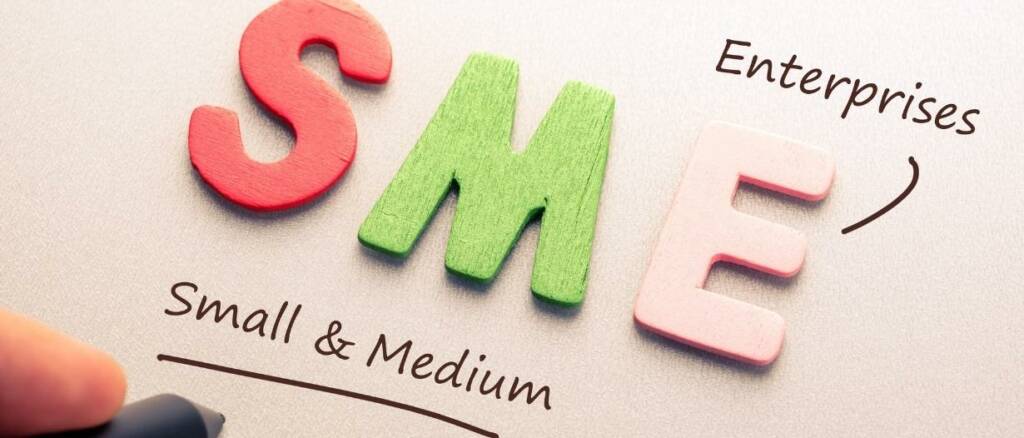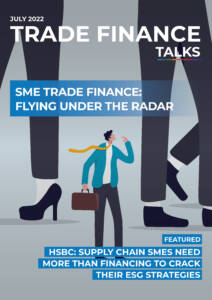Estimated reading time: 6 minutes
What happens to global supply chains in the next few years could impact the outcome of the climate crisis more than anything else.
As much as 80% of the world’s total carbon emissions are linked to supply chains, and up to half of the anticipated $100 trillion required to finance the transition to net-zero needs is directed to SMEs, which disproportionately make up those supply chains.
The challenge for SMEs is acute.
They face increasing ESG expectations from their buyers, who are themselves under growing pressure to clean up their supply chains.
Those expectations firmly incorporate social and governance performance to the same degree as environmental performance – especially as the importance of human rights, working conditions, and gender and racial parity grows.
While multinationals have well-developed transition plans and dedicated ESG resources, many smaller businesses have been fighting just to stay afloat amid the disruption of recent years.
For firms still reeling from the pandemic, planning and executing an ESG strategy can feel like a luxury to put off until things are calmer.
Miss getting up to standard now, however, and businesses risk getting kicked out of global supply chains altogether.
Indeed, the transformation of global supply chains is already afoot.
We see changes in existing supply chains as firms build in more sustainable practices; a reorientation of buyers switching to more sustainable vendors to meet customer demands; and a change in the energy and transport infrastructure underpinning supply chains to allow them to operate more sustainably.
Helping SMEs succeed in an uncertain environment
While sustainable financing markets are still evolving, they are no longer just for government and institutional borrowers.
A broad spectrum of green and sustainability-linked products can help firms of all sectors and sizes tie financing strategies to ESG plans, and demonstrate their commitments to being more sustainable.
More broadly, three principles can enhance companies’ approaches.
These are innovation, collaboration, and standardisation.

Innovation
Innovation in financing can drive change across supply chains.
Financing programmes where buyers can help their suppliers with the know-how and financing tools to enable the transition, known as sustainable supply chain finance (SSCF) programmes are becoming more available.
They benchmark financing to ESG performance, agreed between them and their anchor buyer, building resilience in the supply chain as the interdependencies between buyer and supplier strengthen.
HSBC has rolled out two such initiatives with Walmart.
One provides early payment for suppliers that set science-based climate targets and the other is for certified diverse and minority suppliers.
Innovation is also driving the emergence of “climate tech” firms and projects that exist specifically to support and simplify companies’ transitions.
One example is the Global Risk Assessment Services (GRAS) project.
Supported by the German government, GRAS uses remote sensing and satellite data to support environmentally-friendly land use.
Asian palm oil suppliers can use it to ensure the land they are using meets the standards of their European biofuel buyers.
Other farmers use similar software to avoid flood plains or areas at higher risk of forest fire, thereby reducing their business risk levels.
Using fast and low-cost software like this can drastically simplify SMEs’ ESG plans, reducing dependence on lengthy land surveys, for example.
Collaboration
Secondly, collaboration is critical.
Collective, consistent and credible partnerships between financial institutions, businesses, technology providers, and a range of other stakeholders must underpin the sustainable transformation of supply chains.
But what does this mean in practice?
Take a company in the US that wants to provide financing deep into their Asia-based supply chain to support ESG transition.
That requires expertise in ESG measurement, risk mitigation, financing, local regulation, and ongoing monitoring and transparency.
Such measures require collaboration across rating agencies, banks, and public sector bodies.
This may sound daunting for the US firm, but the will is absolutely there, and the technologies to tie it all together in a simple and cost-effective way are coming online at breakneck speed.
This collaboration and the scale of change required across such big supply chains drive a need for standardisation.
That means specific and agreed frameworks so that SMEs can determine what constitutes the kind of practice that will certify them as good participants in the supply chains of the future.
The UK currently does not have legal requirements for SMEs to measure and report on their emissions but they typically use frameworks based on standards and guidelines developed by organisations, such as the GHG protocol or the EU taxonomy.
Larger businesses, however, with at least 250 employees and an annual balance sheet of over £18 million or an annual turnover greater than £36 million, are mandated to conform with the Streamlined Energy & Carbon Reporting (SECR) framework.

Standardisation
Having clearer standards will help offer clarity on the nuances that exist for SMEs and enable the skills and training needed for them to understand green finance better and put much-needed transition plans into practice.
Once this kind of standardisation is incorporated into climate tech, things get simpler and opportunities emerge.
Firms are already using sustainability applications that collect, analyse, and collate the ESG performance of the companies they deal with – such as where and how materials are sourced – into databases drawing similar information from hundreds of other users.
This then gives firms visibility across whole industries, allowing them to make buyer and supplier decisions that can improve their own sustainability scores by ensuring their own business relationships are more sustainable.
The coming ESG transition
Looking at the scale of the ESG transformation that will take place in supply chains in the coming years, and framing it solely as a challenge to be overcome, can be overwhelming.
It is key to bear in mind that what we have embarked upon is, for SMEs, a massive commercial opportunity too.
Old sectors will be transformed.
New ones will emerge.
The priorities of customers have already radically changed. But thanks to the commitment of industry and the revolution in technology, getting ESG strategies right need not be expensive and time-consuming for SMEs.
For those that do get it right, a world of opportunity awaits.
Read the latest issue of Trade Finance Talks, July 2022

 Australia
Australia Hong Kong
Hong Kong Japan
Japan Singapore
Singapore United Arab Emirates
United Arab Emirates United States
United States France
France Germany
Germany Ireland
Ireland Netherlands
Netherlands United Kingdom
United Kingdom










Comments are closed.